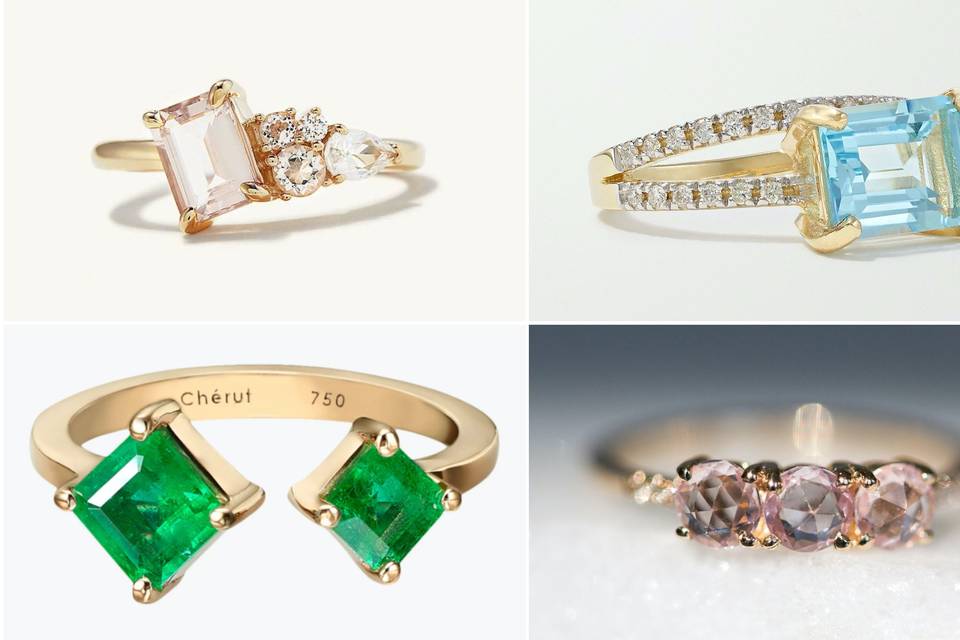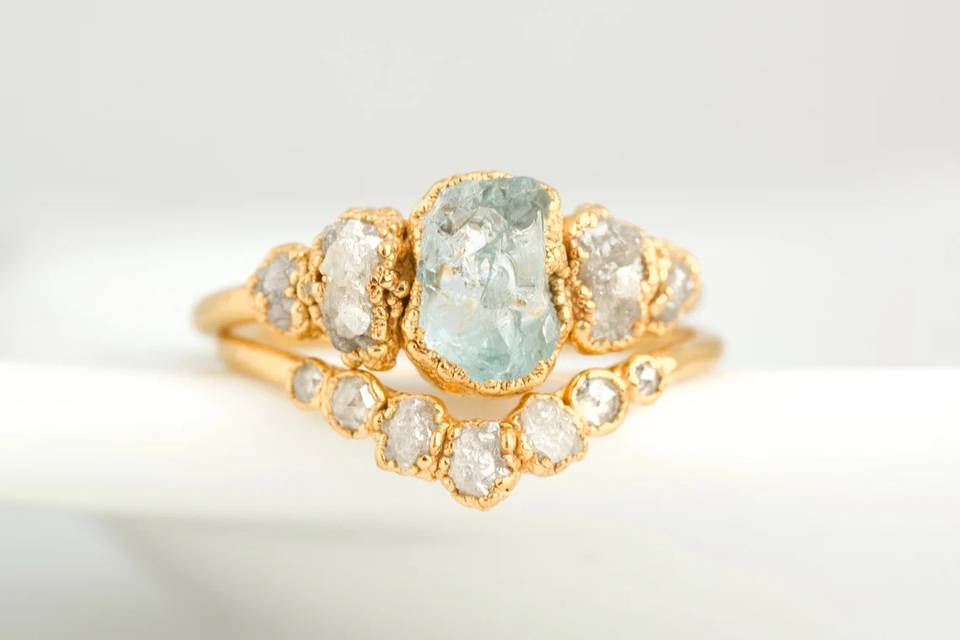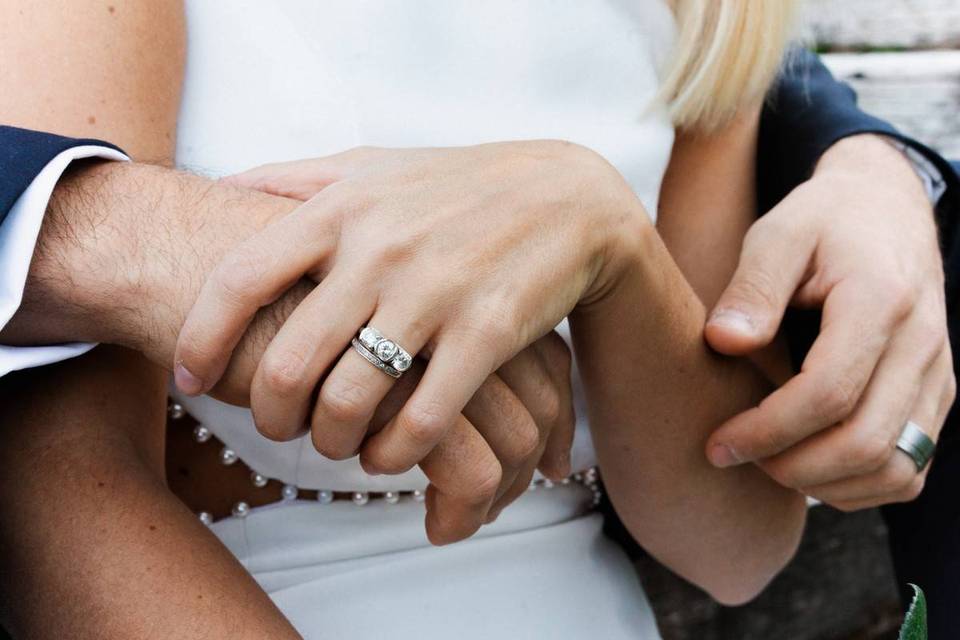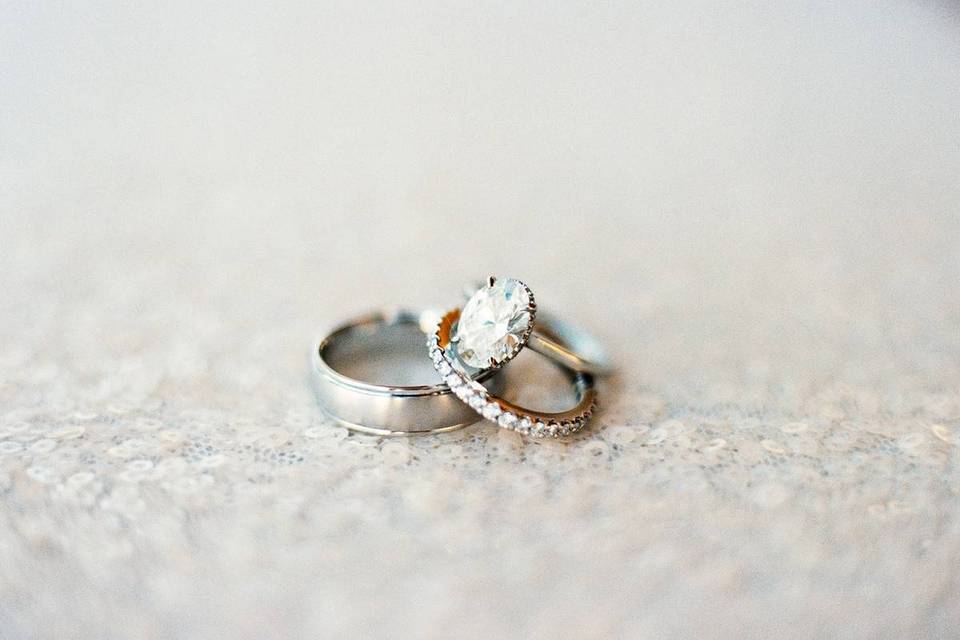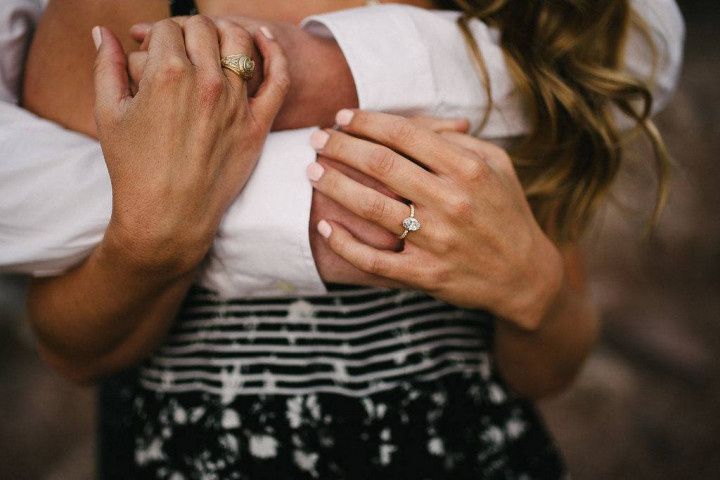Engagement Rings 101: All the Basics to Know Before You Shop
From diamond shapes to the difference between platinum and white gold, this comprehensive guide is a crash course in engagement rings 101.
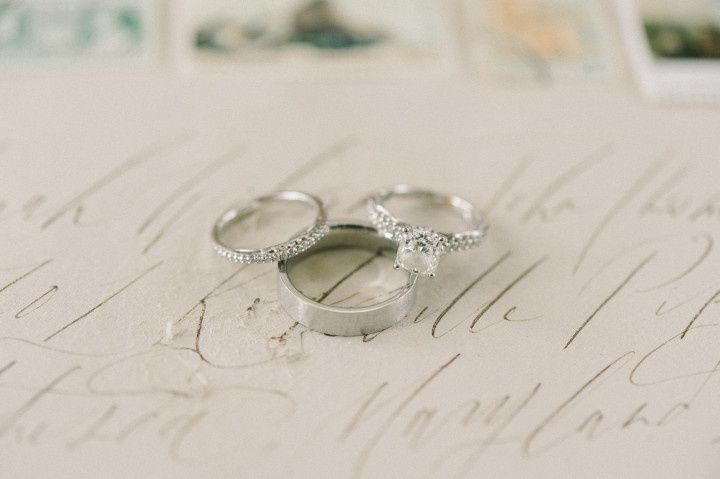
If you're new to browsing engagement rings, you might be surprised that understanding the different styles actually involves learning quite a few technical details. From diamond shapes or common ring metals, there's a lot of information to take at once, which is why we're giving you the lowdown on engagement rings 101. Save this handy guide as a reference for all the basics you need to know as you're browsing and shopping for an engagement ring (whether it's for you or someone else!).
Ready for your engagement rings 101 crash course? Let us help you out.
Engagement Ring Shapes
The first rule of engagement rings 101 is to know the difference between diamond shapes. The shape of a gemstone is often referred to interchangeably with its cut, but they're actually two different things. While the shape refers to the overall appearance of how the diamond looks on your hand, the cut refers to how the facets (the tiny flat surfaces on the stone) are arranged, which ultimately impacts how the ring reflects light. More facets = more sparkle! Cut is just one of the 4 C's of diamonds that are part of a global quality grading scale. For everyday purposes, knowing the basic diamond shapes is a good start. We've listed some of the most common engagement ring shapes below.
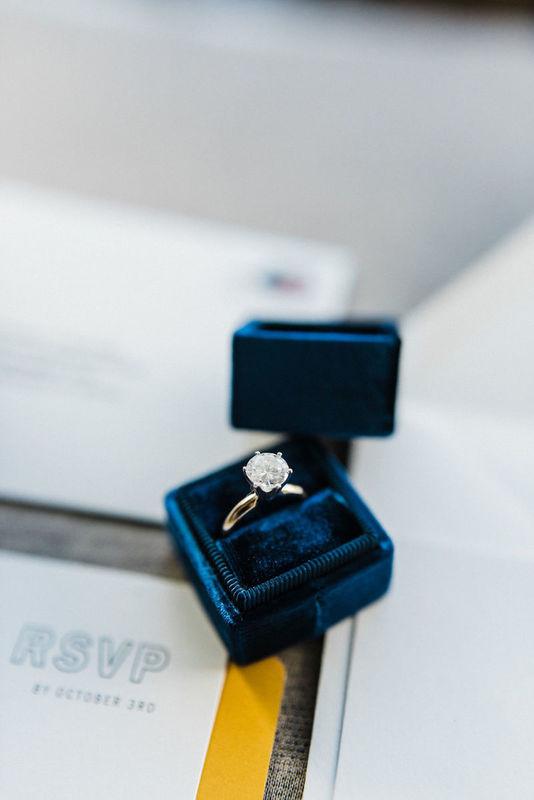
Round: A perfectly symmetrical circular shape. When paired with a brilliant cut, this shape lets in the most light and creates maximum amount of sparkle.
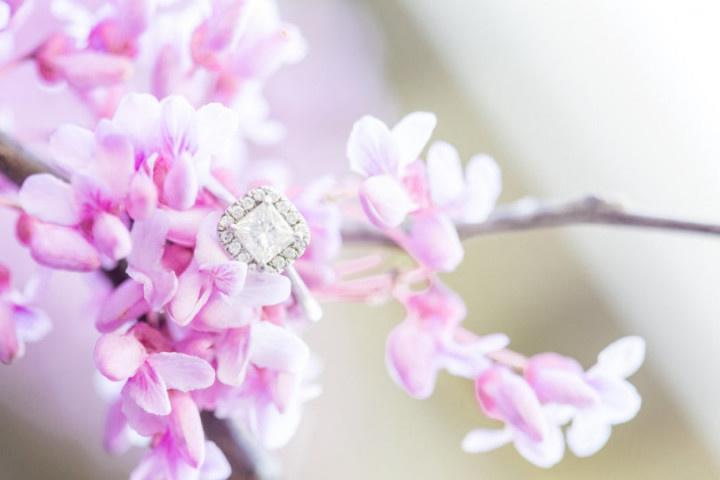
Princess: A square cut with four defined, pointed corners.
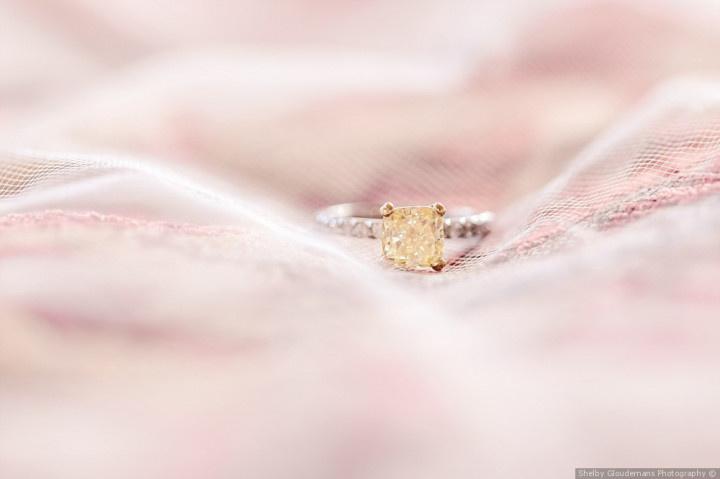
Cushion: Alternatively known as a "pillow cut," the cushion shape is a cross between a square or rectangular shape and a round shape.
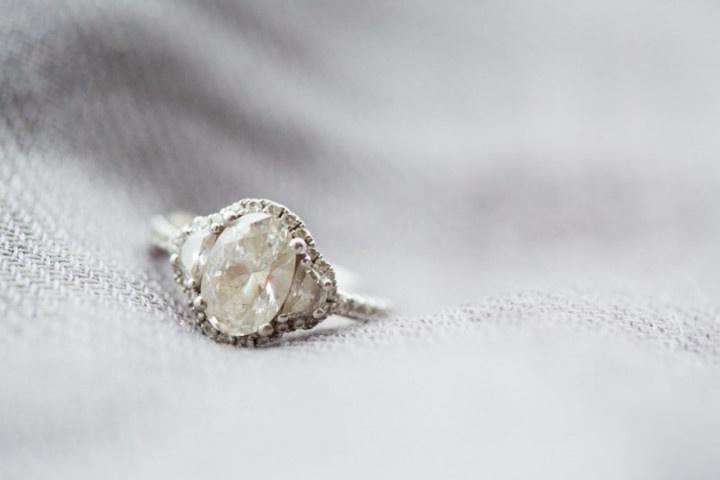
Oval: An oblong circular shape.
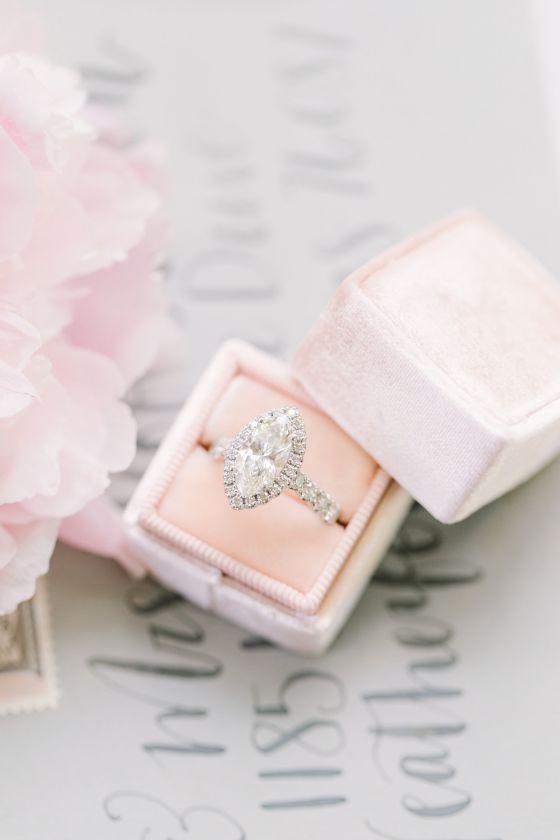
Marquise: An oval shape with pointy ends and a narrower middle width.
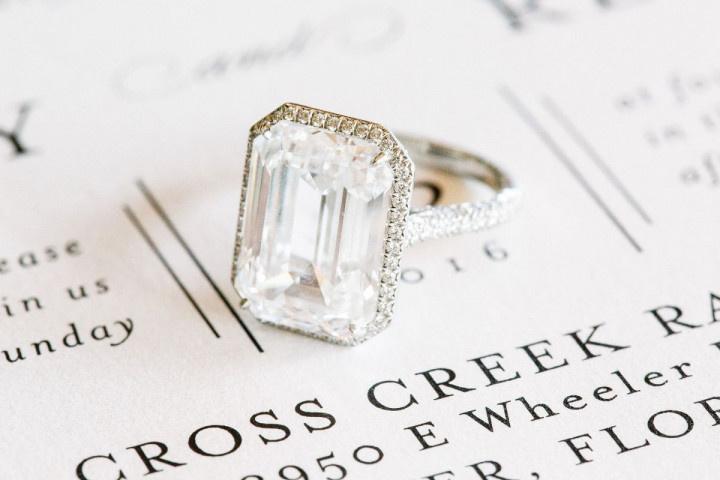
Emerald: A rectangular shape with cropped corners and step-like facets. When looking directly through the top of the stone, you should be able to clearly see through it, since the facets are concentrated around the edges instead of going through the center.
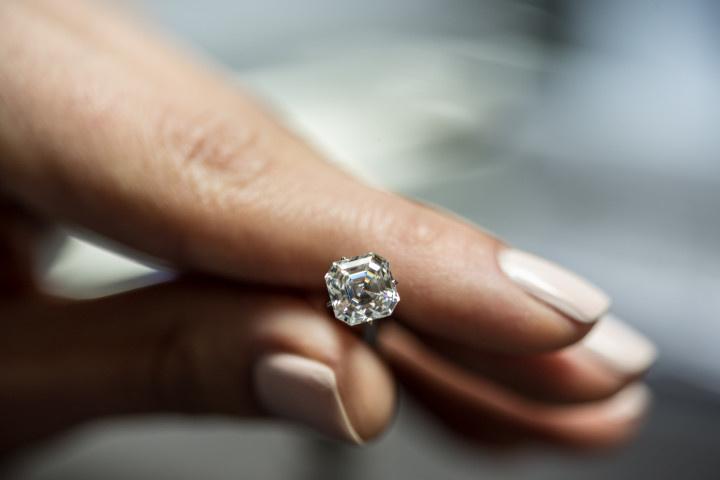
Asscher: Similar to the emerald shape, Asscher cuts have cropped corners and step-like facets, but they are a square shape instead of rectangular.
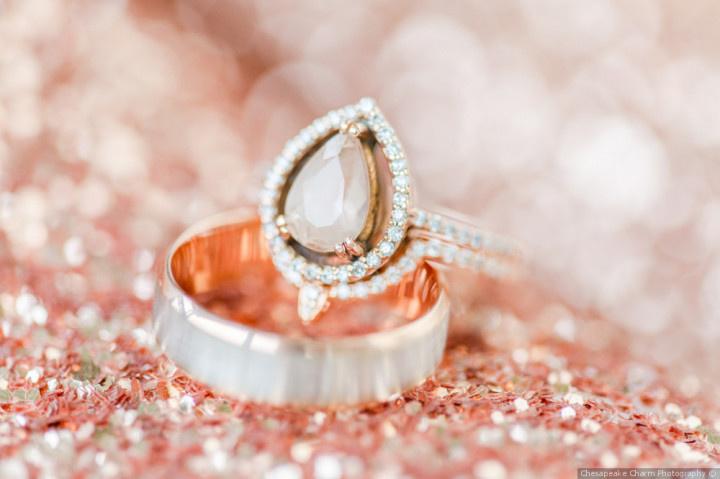
Pear: A rounded bottom with a pointed tip, resembling the shape of the fruit it's named after.
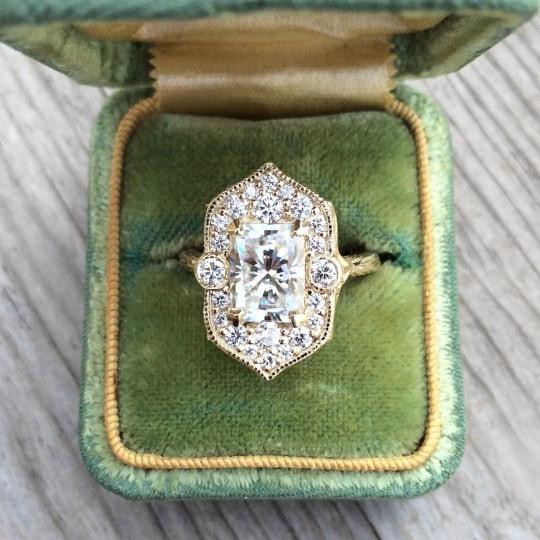
Radiant: A square or rectangular shape with cropped corners and parallel sides. When elongated, this shape looks similar to emerald, but the difference lies in the cut. While the emerald shape features rectangular facets that mimic a staircase, the radiant shape is distinguished by its triangular facets. Since there are more facets to reflect the light, the result is an ultra-dazzling stone.
Engagement Ring Settings
After the stone shape, the type of setting is the second-most important detail when it comes to engagement rings 101. The setting refers to how the center stone is mounted onto the band and partially determined by the stone shape, since some shapes will require specific settings. There are a variety of engagement ring settings and each evoke a different aesthetic.
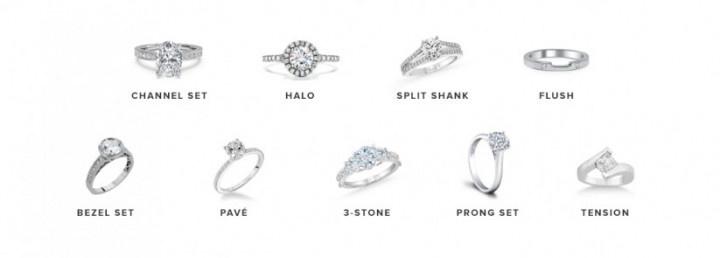
Channel setting: A series of small diamonds that are set closely together in an enclosed in a "channel" between the edges of the band.
Halo setting: A circle of small diamonds or other gemstones surrounding the center stone. Some rings feature two circles, resulting in a double halo.
Split shank setting: A band splits in two as it approaches the center stone.
Flush setting: The center stone sits flush in a hole that is drilled into the band, rather than sitting above the band.
Bezel setting: The center stone is encircled by metal on all sides, leaving only the top exposed.
Pavé setting: A series of petite diamonds set closely to each other along the band.
Three-stone setting: Two accent stones or baguettes (long, narrow stones) flank either side of the center stone.
Prong setting: Tiny metal pieces act as a claw to hold the center stone in place.
Tension setting: The center stone is held in place by intense pressure from the band. This gives the illusion that the stone is "floating" between the metal.
Engagement Ring Metals
The metal refers to what the actual ring is made out of. There are a few different engagement ring metals to choose from and all vary in price. Style preference and budget are factors that go into deciding what kind of metal to opt for.
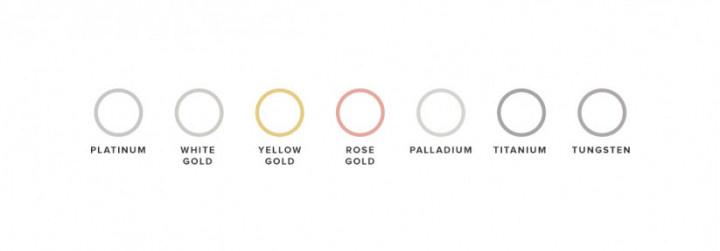
Gold: The measurement for gold is a karat, not to be confused with carat, which is used in reference to the weight of a diamond. Pure gold is 24 karats, which is too soft to make jewelry, so it is paired with other elements to strengthen it. There are three different types of gold used for engagement rings.
Yellow gold: It has a shiny gold hue and is a classic option.
White gold: White gold may look similar to platinum, however, this metal is much lighter in weight.
Rose gold: The gold is mixed with copper, giving it its signature pink shade. Our favorite reality star-turned-fashion guru Lauren Conrad rocks one!
Platinum: It is incredibly sturdy, naturally hypoallergenic, and its finish won't fade over time, making it one of the most popular choices for engagement rings.
Palladium: It's hypoallergenic, won't tarnish or oxidize, and is lighter in weight than platinum.
Titanium: It has a darker silver color than platinum or palladium but is more lightweight.
Tungsten: It's one of the hardest metals and is virtually scratch-proof.

